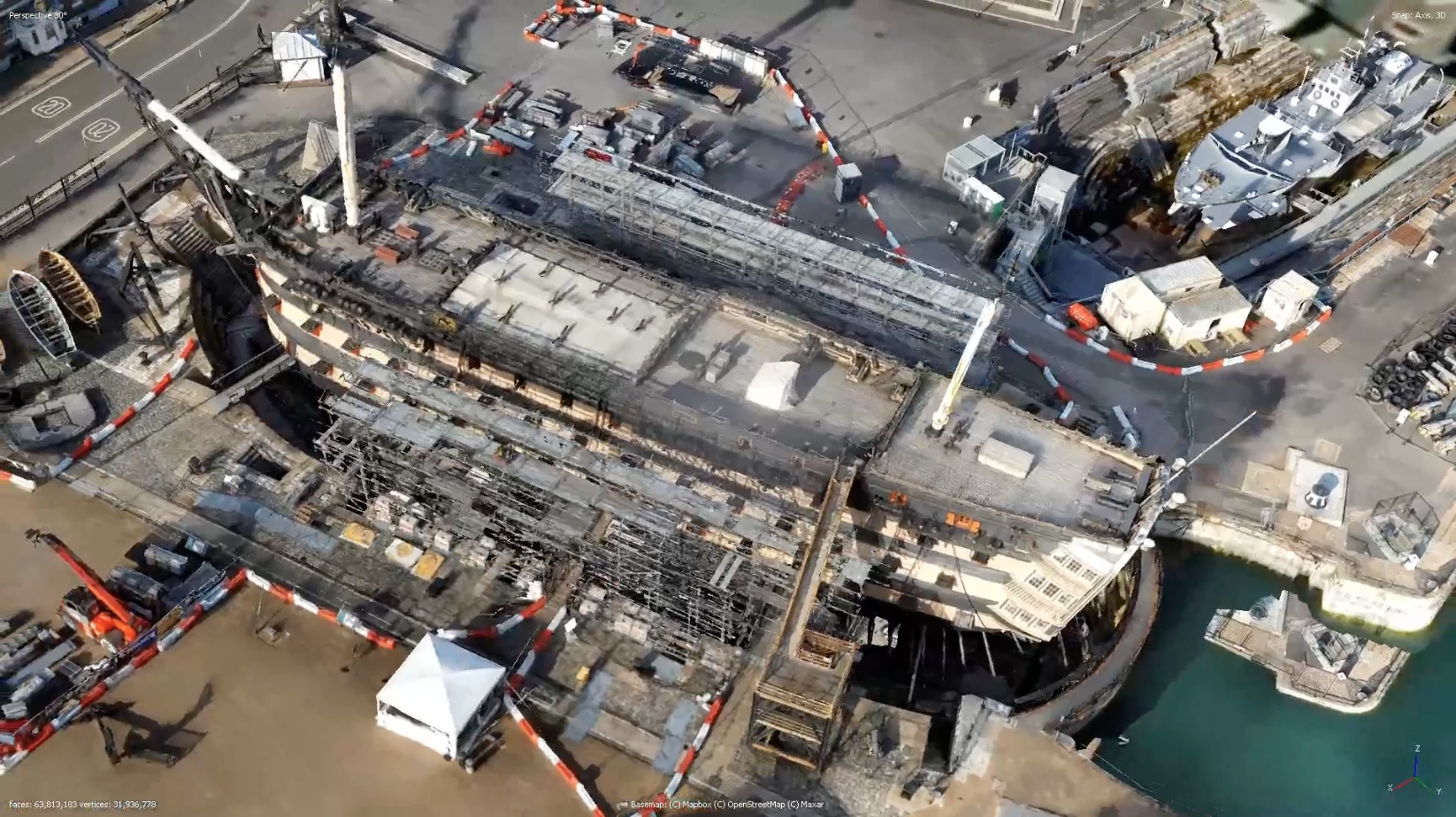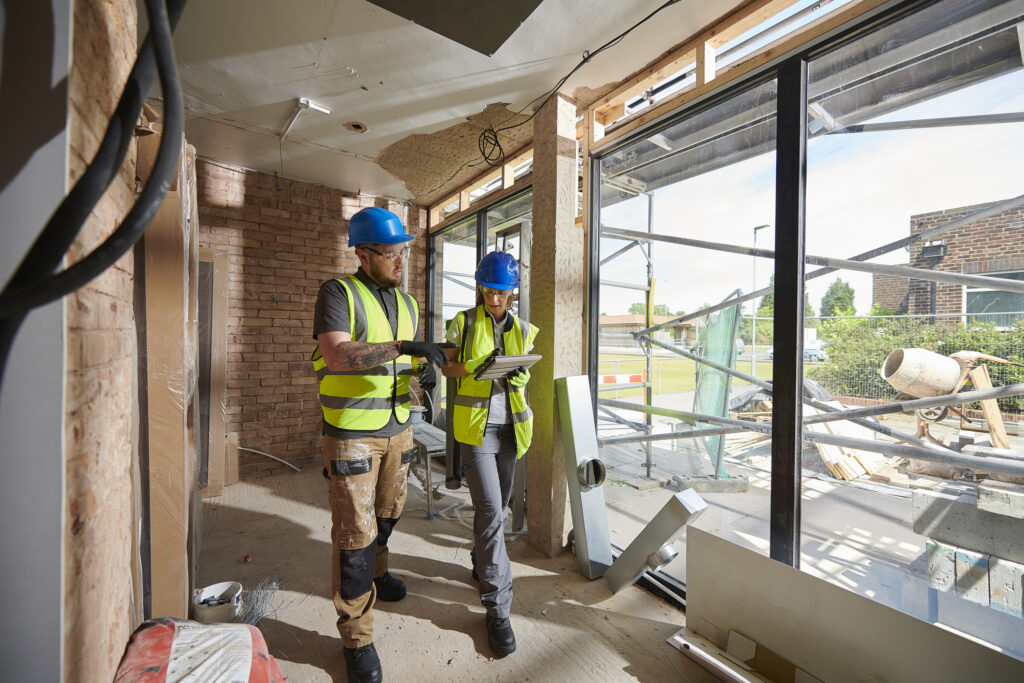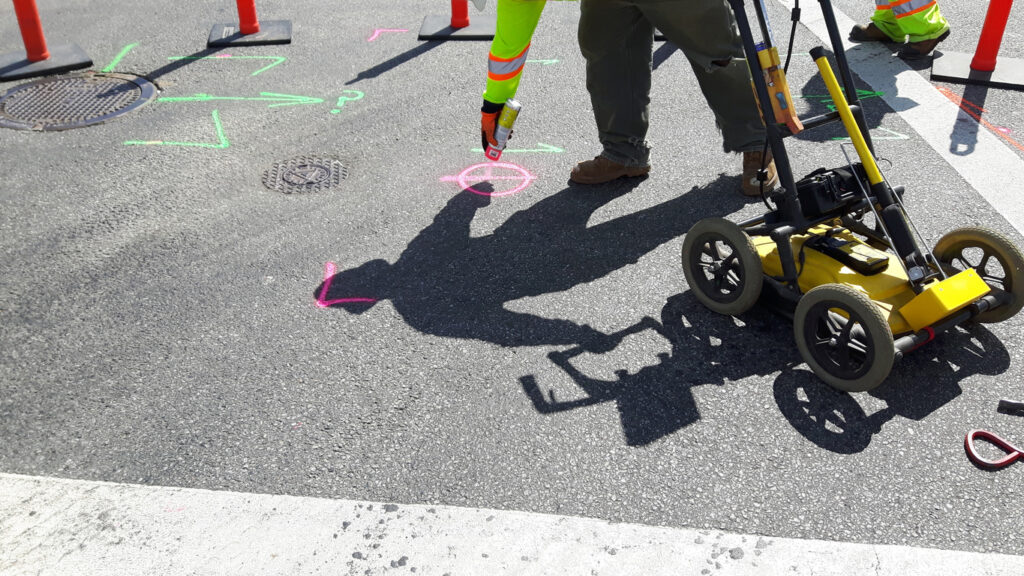Combining traditional shipbuilding skills and modern technology with FME
The restoration of HMS Victory is being tackled through innovative methods, offering new ways to visualize and understand changes to the ship over time.
HMS Victory is one of the most historically significant warships of the age of sail and world maritime heritage. Being the only surviving first-rate ship-of-the-line, she is mainly known for her leading role in the 1805 Battle of Trafalgar, off the coast of Spain. Dry docked in Portsmouth Historic Dockyard since the 1920s, the 250 year-old ship has been under the care of the National Museum of the Royal Navy (NMRN) since 2019.
Maritime archaeologist Dr. Rodrigo Pacheco-Ruiz is currently NMRN’s Archaeological Data Manager for HMS Victory and together with a team of heritage and conservation experts is leading the documentation of the restoration. While 3D models of HMS Victory have been produced, the team’s documentation of this repair is unprecedented in scope.
Having used FME in previous projects, in particular offshore and deep-sea archaeological sites, Dr. Rodrigo Pacheco-Ruiz chose FME to collect and standardise the vast amounts of data needed to digitally reconstruct and document the works on the historic ship.
Documenting data across time
In undertaking the largest restoration project of its time, scientific and accurate documentation of the changes to HMS Victory’s structure by the team are essential to understand the ship’s condition and planned repairs. By creating 4D models, the team has gained a unique approach to restoring and ensuring the longevity of HMS Victory. These models provide a digital environment to approach issues and examine repairs without unnecessary modification of the ship’s structure and historic fabric. Such documentation is crucial in the process of preservation of HMS Victory, allowing the team to plan with greater precision and to digitally explore structures of interest on the ship.
To document the repairs, Dr. Rodrigo Pacheco-Ruiz uses a combination of state-of-the-art technology, including high-resolution laser scanning and stereoscopic and high-resolution photogrammetry. Handheld devices and RTK based UAVs provide access and visibility of hard-to-reach areas of the ship. This data is then used to create and update a detailed and highly accurate 4D model of the vessel.
Information from these models supports a team of more than 20 shipwrights, who in turn tackle the repairs based on traditional techniques to repair the vessel. With detailed knowledge of the ship’s structure, the shipwrights can then work with greater precision, confident that all measurements are correct and that all necessary information is available.
How FME problem-solves for peace of mind
FME has been essential in standardising the data collected from laser scanning, photogrammetry, and UAVs. Using FME’s Point Cloud Reader, the team standardises, manipulates, edits, and converts data through a streamlined workflow. This method allows the team to seamlessly clip and merge different point cloud data sets. When focusing on specific areas of the ship, predefined dimensions and coordinates isolate the necessary data from a full scan, eliminating the need to manually scan data. This process ensures accuracy and significantly enhances productivity by allowing the team to focus on critical restoration tasks.
With FME, the team unifies diverse data sources into a single reference point, eliminating inefficiencies in managing multiple coordinate systems. This capability is crucial for such a complex project where data may lack georeferencing or use different systems. Without georeferencing, it is not possible to accurately map or analyse data in relation to other spatial data. FME supports georeferencing and coordinate conversions to adjust data to the correct location and ensure consistency across all datasets.
FME also provides real-time insights and empowers the team to strategize. Changes in weather and seasonal variations affect the work done by shipwrights and pose risks of causing project delays and difficulties. For instance, if wood becomes wet, it cannot be used for repairs, leading to significant delays. By delivering up-to-date and comprehensive insights, FME enables the team to better plan and prioritise tasks, enhancing efficiency and optimising material usage.
In a project so dependent on timing, FME has proven to be essential, ensuring that issues are addressed quickly—sometimes within just one hour. This rapid response prevents errors from spiralling into significant delays or backlogs. Without FME, the process of identifying and resolving issues could take upwards of two to three days, assuming they are noted in time. FME eliminates the need for manual data input to solve errors, effectively mitigating potential years of delays and additional backlogs. The exponential difference in efficiency with FME is clear: issues that could have taken days to resolve are now handled 70 times faster, significantly enhancing the project’s overall workflow and success.
“…Instead of looking to the past in terms of the work that we have to do, we’re literally looking to the future, and we are planning ahead.” -Dr. Rodrigo Pacheco-Ruiz, Archaeological Data Manager for HMS Victory, National Museum of the Royal Navy
Using FME to look into the past and prepare for the future
With a solid data foundation, Dr. Rodrigo Pacheco-Ruiz is planning other opportunities to take advantage of FME. Although a digital twin of the ship exists, any structural changes must currently be inputted manually. In the future, FME could be used to automate the links between the digital twin’s Revit model, Rhino, and an SQL database. By automating these connections, the team would maintain an up-to-date living digital twin of HMS Victory.
Through the conservation project, the NMRN has meticulously documented HMS Victory’s condition, uncovering crucial details that inform its restoration and preservation. With FME, Dr. Rodrigo Pacheco-Ruiz and his team are bridging the past and future, supporting the ship’s conservation for years to come.
The National Museum of the Royal Navy is a recipient of Safe Software’s FME Grant Program, which supports educational, research, and non-profit institutions in using their data to make an impact. Learn more about the National Museum of the Royal Navy’s conservation of HMS Victory, here.




